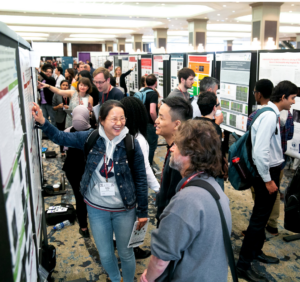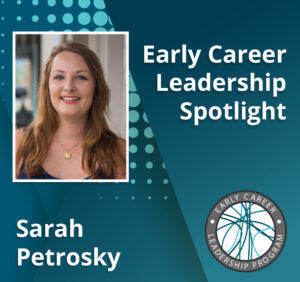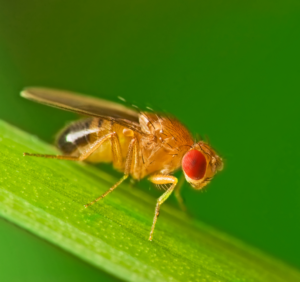Today's guest authors are Marcos T. Oliveira (Universidade de São Paulo), Nathane R. Rodrigues (Universidade de São Paulo), Ricardo G. P. Ramos (Universidade de São Paulo), and Guilherme Oliveira Barbosa (Universidade Estadual de Campinas).
In Brazil, doing science is expensive, and getting more so every year. Most reagents are imported, subject to fluctuating exchange rates, customs delays, and often high taxes. For many labs, especially newly established ones, these pressures pose constant daily challenges.
We represent Brazilian Drosophila melanogaster researchers at all career stages, who independently decided to use this model system in our own labs to pursue our biological questions of interest. We have been able to do meaningful biological and biomedical research, even under budget constraints. In the past, six Nobel Prizes in Physiology or Medicine have been awarded to scientists for groundbreaking discoveries made using this fruit fly. We strongly believe that broader adoption of this low-cost, high-impact, Nobel Prize-winner model could help many in resource-constrained settings to be competitive in the global research landscape.
Reframing what “low-cost” means
It’s tempting to associate low cost with low impact or low quality. But in the case of Drosophila, the affordability is a feature, not a flaw. Experiments with flies are estimated to cost only 10% of those with mice. Paraphrasing Hugo Bellen from Baylor College, “you get 10 times more biology for a dollar invested in flies than you get in mice,” with the same high-impact findings, we would add.
To avoid the regulatory hurdles and the high costs of in vivo experimentation with mammals, many scientists take refuge in cell culture models, which have numerous limitations. We recently collected cost data from independent suppliers in Brazil to estimate the annual cost of establishing and running a fly lab compared to a cell culture lab; the results can be found here. We found that Drosophila culture is almost three times less expensive than mammalian cell cultures. If we consider only non-durable consumables, the yearly costs are almost seven times lower (as seen in Graphic 1).

We based our estimates on top-tier fly lab materials and equipment, so the cost differences may be even higher with a lower-grade infrastructure or “homemade” devices. For example, we can now build our own CO2 pads, comparable to those sold by FlyStuff (used to anesthetize adult flies), at a fraction of the cost. We are also currently testing a light-emitting system for screening GFP-positive flies, which appears to match performance with NightSea’s Royal Blue.
Newly hired researchers will likely find a cell culture laboratory or a mouse/rat facility already in place at their institutions, which minimizes initial costs. In the long run, however, working with these models can become expensive and administratively burdensome due to the ongoing need for ethics committee approvals.
With Drosophila, we run genetic and toxicological screens, model neurodegeneration and cancer, manipulate development and metabolism in vivo, and follow multigenerational effects with tools that rival (or surpass) those used in more expensive systems. It’s deep biology in a whole animal, at the fraction of the cost–and available here in our own country.
In Brazil, young researchers in particular are often told to think big, but work small. Most of our federal grants are small, and our postdocs and grad students underpaid (the state of Sao Paulo is an outlier though, since the state foundation FAPESP is committed to funding science). That’s why Drosophila can be a career-sustaining choice. It allows new labs to publish meaningful results, train students in rigorous methods, and build international collaborations, without the anxiety of running out of supplies mid-experiment.
Culture, perception, and funding priorities
One obstacle is the local perception that Drosophila research equals genetics and evolution research. It’s true that fruit fly research has made a huge impact in these areas worldwide throughout the last century, but contemporary Drosophila research is much more. There are thousands of transgenic fly lines that literally serve as “living reagents” and cost as low as USD 28 each. Using these allows us to combine cutting-edge tools and classical genetics in myriad biological problems.
We need to reframe how we think about high-quality and cost-effective science. Saving money in one area (by using a cheaper but equally effective model organism like Drosophila) frees up resources to ask bolder questions elsewhere. It allows for replication, iteration, and breadth—features always seen in high-quality publications.
We’ve seen colleagues light up when they realize they can test a new hypothesis in days, not months, and students have been mesmerized by being able to study Parkinson’s or Alzheimer’s disease in a tiny fly, because they too have complex neurological circuitry. For many of them, Drosophila can be their first real chance to engage in discovery science.
Building fly infrastructure—and confidence
Cost alone doesn’t guarantee success. Drosophila work can be laborious and still requires trained personnel and facilities. Shared fly rooms, stock maintenance support, and national repositories could dramatically reduce barriers to more use of Drosophila in Brazil. We are part of a growing fly community interested in biomedical research, called the FlyPower group. We meet once a month virtually and once a year in person.
We are engaged in outreach programs, scientific dissemination, training courses and fly research advocacy. In May, we had a two-day long in-person FlyPower meeting preceding the Annual Meeting of the Brazilian Society for Biochemistry and Molecular Biology, during which we also offered a course on Drosophila genetic tools. In July, during the Annual Meeting of the Brazilian Federation of Experimental Biology Societies, we had another course. Last year, the XII Symposium of Ecology, Genetics and Evolution of Drosophila dedicated a full session on the biomedical use of flies with the presence of many FlyPower members. And lastly, last year the first startup company in the country to use Drosophila for functional genomic tests was launched.
The FlyPower is also committed to bringing Drosophila into diverse undergraduate classrooms. We aim to highlight its relevance across many areas of the biomedical sciences, including biochemistry, physiology, cell biology, and more. This initiative helps young students become more aware of Drosophila and its powerful genetic toolkit. We are determined to continue until more researchers are empowered to integrate the fly into both their lab routine and teaching practices.
A model for equity and sustainability
Ultimately, Drosophila is not just a cost-saving option. It is a powerful platform for democratizing science. It opens doors for labs that would otherwise be priced out of ambitious biological research. In a country like Brazil, where brilliant scientists and creative ideas often run into budgetary walls, this matters. This may even be relevant to avoid the exodus of young brains from the country, who are drawn to the Global North seeking better career prospects.
Drosophila research also brings environmental sustainability. The animals can be cultured in small glass/plastic bottles that can be cleaned and reused many times, different from the culture of mammalian cells in vitro, which produce a significant amount of plastic. And to overcome the time-consuming, manual cleaning of glassware, the limiting factor in scaling up Drosophila culture, we are working on designing new equipment that could even save water and soap.
By embracing models that make our work more sustainable and equally impactful, we can build research programs that are resilient and globally relevant. In this way, a tiny fly may help Brazilian life sciences soar. It is time to fly!































